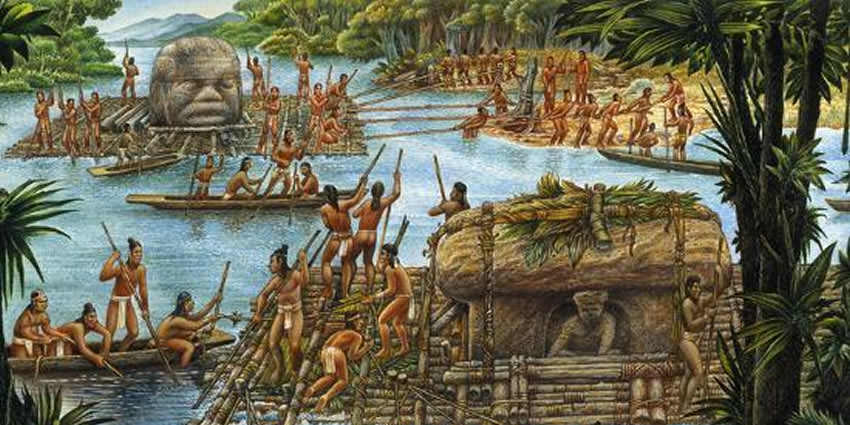
The Olmec civilization
Almost all of the world’s earliest civilizations arose in river valleys, and the Olmecs were no exception. The central Olmec region is a low-lying area along the gulf about 200 km long and 100 km at its widest point.
This compact area contains the vast majority of the great Olmec stone monuments – the colossal heads, “altars” (actually thrones), free-standing sculptures, and steles for which this ancient culture is famous.
The central part of the country is watered by deep rivers, and these annual layers of alluvium are deposited on natural levees above their banks. Rainfall is heavy and continues even during most of the so-called dry season.
These factors led to the richest land in all of Mesoamerica for growing corn.
The age and nature of Olmec culture have been the source of endless debate.
For a very long time, leading Mayanists were reluctant to give the Olmecs temporal priority over Classic Maya, although archaeological evidence showed that Olmec-style objects were stratigraphically very early.
It was only when the first radiocarbon dates on the major Olmec sites were published that the Mayanists were proved completely wrong, they had underestimated the true age of the Olmecs by about 2,000 years!
The first inhabitants of the oldest and greatest Olmec site at San Lorenzo may have arrived there around 1400 BCE. from the Pacific coast of Chiapas and Guatemala, but by 1200 BCE. this great center was entirely Olmec.
San Lorenzo was ruled by powerful kings who could command the carving of multi-ton portrait heads from basalt that had to be imported from the Tuxtla Mountains to the northwest.
The center of San Lorenzo is a great plateau, raised some 50 m above the surrounding plain and partly artificial, but the entire occupation is now known to cover no less than 500 ha.
Until its downfall about 900 ВСE, there was nothing remotely comparable to it in the rest of Mesoamerica.
At that time, the much-vaunted lowland Maya to the east were little more than hunters and gatherers who dabbled in agriculture; the polities of Oaxaca and the Valley of Mexico were small chiefdoms.
Here, and after 900 ВСE, in La Venta, Olmec thinkers and artists developed Mesoamerica’s first religious iconography, with depictions of an array of deities in stone, pottery, jade, and almost certainly wood.
These sacred symbols were imported along with pottery vessels and clay figurines that had been fired in San Lorenzo kilns, up into highland Mexican sites like Tlatilco and Las Bocas, and across the Isthmus of Tehuantepec to the Soconusco region of the Pacific coast.
During the Middle Formative period (900-400 ВСE), much of this diffusion of Olmec patterns of culture involved the export of finely carved jade, perhaps largely from La Venta and its support area.
In its beauty and power, there is nothing quite like the Olmec art style, whether expressed in tiny jade figurines or in enormous basalt monuments.
In spite of their great antiquity, the Olmec sculptures were the greatest ever seen in Mesoamerica.
The strange beings depicted often combine feline features with those of humans – especially human infants; recent research is proving that some of the well-known gods of the Classic period can be traced back to Olmec’s beginnings.
Stirling and Covarrabias, together with the Mexican archaeologist Caso, claimed that Olmec civilization was the «mother culture» from which all later Mesoamerican civilization was ultimately derived.
In recent years, some influential archaeologists who work in areas outside the heartland have put forward that the Olmec was only one of a number of so-called «sister civilizations», that there was nothing unique about the Olmec, and that the «Olmec style» was nothing more than a group of unrelated symbols that might have been invented by any one of the «sisters».
Suffice it to say that all recent archaeological data have conclusively proved that the «mother culture» theory can now be considered fact. All complex culture in prehispanic Mesoamerica has its roots in the Olmec heartland.
Let us know if this article was useful for you